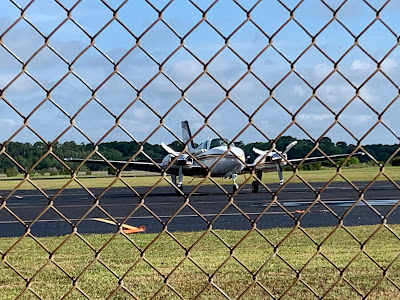I woke up early Saturday to head off for more training. I spent 15 hours with an instructor and another 10 for my initial transition training. You learn a lot in the plane but there are many things we have to modify in practice because it would be too dangerous to practice for real. Engine failures are at the top of this list.
Losing an engine in the first few seconds after liftoff is a difficult test for any pilot. In some situations the best outcome may be a bent airplane. Thus we practice these events further from the ground. In the simulator, we can safely practice all these scenarios.
The training was in Beaufort, SC so I had a nice flight up the coast and a smooth arrival at the airport. Once down, I went to the lot and had instructions how to borrow one of the cars. The training is just a few minutes down the road and I was soon completing the briefing with my instructor.
We went through the book work and procedures we were going to practice in the simulator or box. While the simulator did a good job acting like a 58 Baron, it was not my exact equipment. This made it harder in that the equipment was like what I had used years ago. This was not a big issue in that mostly you are concerned with handling the emergencies.
Training started with basic flying, then instrument flying. We progressed to stalls and VMC demonstrations and then it was off to engine out practice. The first few were easy in that I was already 200 feet in the air. The engine cut at 30 feet just as the gear was coming up was interesting but I followed the drill, kept control and slowly climbed away. We then did single engine instrument approaches to minimums next, and added one with a go around. A go around on one engine is not really a maneuver you want to do from a low level for real. In the simulator you can risk it.
I asked for one additional scenario which was an engine failure at a high density altitude at full weight and high temperatures. In this case you can't climb but if you have planned well you can fly the terrain to a lower elevation airport.
It was a 4 hour program and it went by fast. We did a quick debrief and then I was headed back home. That turned out to be the harder work for the day.






No comments:
Post a Comment